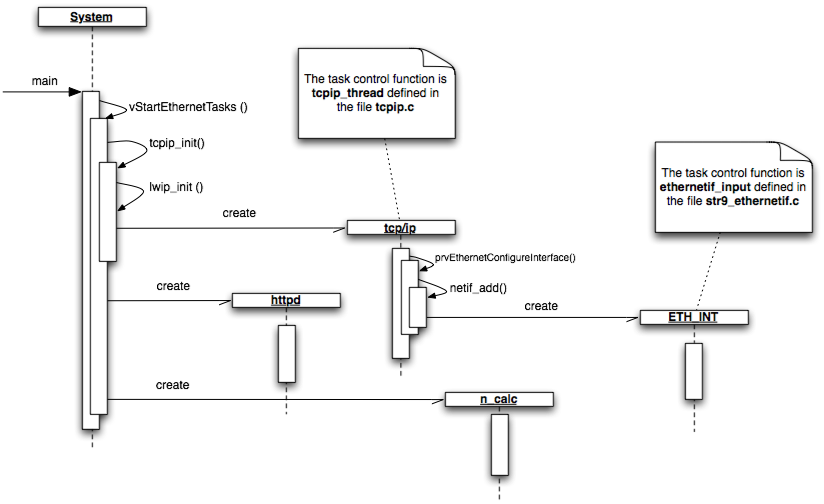There are four tasks that implement all network services of this demo:
The above picture shows the sequence diagram of the tasks creation process. When the system startups the function vStartEthertTasks is in charge of creating all network tasks. First of all it initializes the tcp/ip stack - tcpip_init. The tcpip_init function initializes all data structures needed by lwIP - lwip_init - and then it creates the tcp/ip task. At this page the control flow comes back to the vStartEthernetTasks function that creates the two network application tasks: the web server (httpd) and network calculator (n_calc). Now the ethernet subsystem is up and running! The ETH_INT task is synchronized with the ENET IRQ, and each time a new incoming frame is received by the peripheral, it send the frame to the tcp/ip stack that process the frame. |
STR91x Ethernet demo >

